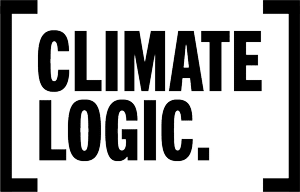When businesses talk about reducing their carbon footprint, they often focus on what’s happening within their own four walls—electricity use, office waste, or employee travel. But for most organisations, the biggest source of emissions lies further upstream and downstream: the supply chain.
According to the CDP, supply chain emissions are on average 11.4 times higher than operational emissions. For product-based and construction businesses, it’s often even more. These are your Scope 3 emissions—and tackling them is one of the most powerful ways to drive real, scalable climate action.
Why Scope 3 Matters
Scope 3 includes all indirect emissions that occur in the value chain. That means everything from the production of raw materials, to packaging, logistics, use-phase, and end-of-life disposal. It’s complex—and it’s where the most significant impact often hides.
- Construction materials like steel, cement, and aluminium carry large embedded emissions.
- Freight and logistics can be a silent contributor, especially for imported goods.
- Professional services and digital tools also have their own carbon footprint, especially when scaled.
Understanding your supply chain emissions isn’t just about climate—it’s about risk. As climate regulations tighten and stakeholder expectations shift, businesses that can’t account for these emissions may face rising costs, reputational damage, or missed procurement opportunities.
What You Can Do
Tackling supply chain emissions may sound daunting—but it’s absolutely achievable with a structured approach. Here’s how we guide our clients through it:
- Map Your Value Chain
Identify where your products and services come from, who supplies them, and what processes are involved. This gives you a foundation for identifying high-impact areas. - Estimate Emissions Using Available Data
Start with industry emission factors and procurement data. Tools like Sumday are a great starting point for first-pass estimates. - Engage Your Suppliers
Start the conversation. Ask key suppliers for emissions data, policies, or environmental certifications. In time, collaborate with them to set reduction targets. - Set Scope 3 Targets
Set reduction goals that align with your broader sustainability strategy. These can be intensity-based (e.g. emissions per unit sold) or absolute targets. - Embed Procurement Criteria
Include emissions data, circularity, and sustainability credentials in your supplier selection and contract terms.
Embedding Supply Chain Thinking Into Strategy
One of the most effective ways to reduce supply chain emissions is to make sustainability part of how your business evaluates and works with suppliers from day one. That means shifting procurement from a pure cost-based decision to one that considers carbon intensity, resource use, and ethical practices.
It also means building stronger, longer-term relationships with suppliers—ones where both sides have a shared interest in continuous improvement. Companies that co-design lower-carbon solutions with their suppliers often uncover new innovations and efficiencies that benefit both parties.
For example, switching from virgin materials to recycled inputs, rethinking packaging to reduce weight and volume, or consolidating freight shipments to cut transport emissions. These actions often save money as well as carbon.
Even if you’re not yet able to demand full carbon disclosure from your supply chain, it’s worth starting with your most strategic suppliers or your highest-emitting categories. You’ll gain insights, build trust, and create a template for others to follow.
Final Thoughts
Your supply chain is more than just a cost centre—it’s one of the most powerful levers for reducing emissions and building a future-fit business. Getting visibility and engaging your suppliers early gives you a competitive edge and a clearer path to Net Zero.
Want help estimating or reducing your Scope 3 emissions? Let’s talk.

![[Climate Logic]](https://efe1f5e8.delivery.rocketcdn.me/wp-content/uploads/2023/07/climate-logic_logo_reverse.png)

